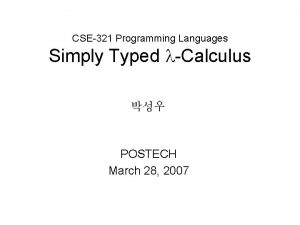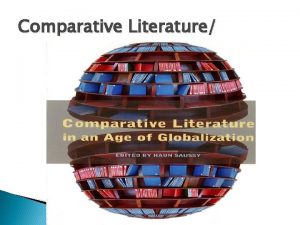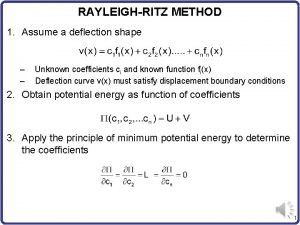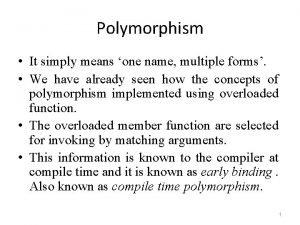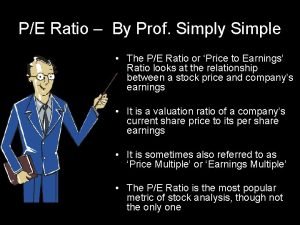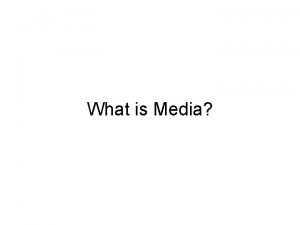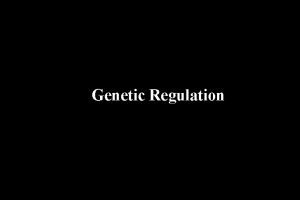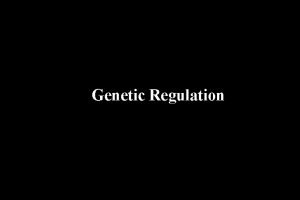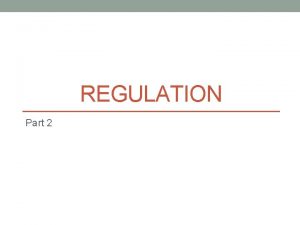Media regulation regulation A regulation is simply a













- Slides: 13

Media regulation

regulation A regulation is simply a rule, or set of rules, intended to shape or guide conduct and behaviour. Government regulation of media content is usually aimed at protecting the vulnerable. Those who argue against regulation say that it creates a “nanny state” bound up in rules and red tape. Those in favour of regulation say that it makes it easier for parents and groups promoting cultural diversity and sexual equality.

nanny state Just as a side note, where does the term “nanny state” come from and what does it mean? The term, “nanny state” conveys a view that a government or its policies are overprotective or interfering unnecessarily with personal choice. The term was coined by a British MP in 1965, comparing overprotective and controlling governments to that of a nanny, or mother figure, in child rearing, constantly making the assumption that people are unable, or shouldn’t be trusted, to make decisions for themselves.

back to regulation Media regulation is a process of control by government authorities aimed at ensuring the media texts that audiences receive fall within set boundaries. Media regulation is usually aimed at protecting particular audiences that are viewed as vulnerable. These vulnerable audiences being protected, include: children, the mentally challenged and the mentally ill.

who gets rektulated? Newspapers and the internet have been relatively free from government regulation. Radio is said to have a “light touch” of control. Cinema is regulated through the classification system. Television and pay television are the most regulated media.

self regulation Self-regulation is a process whereby media organisations set up a committee of their own members to oversee a code of practice. Those in favour say it is less heavy handed. Those against say it is like putting Dracula in charge of the blood bank. Self-regulation does not involve the government, but is instead carried out by the industry or profession itself. A code of practice is usually developed that defines the expected behaviour.

self regulation You may have seen the following ad for Free TV Australia, listing what’s expected in the Code of Practice for television advertisements, current affairs programs, etc.

self regulation Media organisations prefer self-regulation because it frees them from heavy handed government control or censorship. Self-regulation is also seen as more flexible and more likely to be complied with. Self-regulated media usually set up a panel of representatives of each of the major companies involved, together with some representatives of the general public. This panel then sits in judgement on particular cases or complaints. It uses the code of practice to help it decide if there has been any wrongdoing.

who regulates? The official regulation bodies in Australia are the Australian Communications and Media Authority (ACMA) and the Australian Classification Board

ACMA The Australian Communications and Media Authority has regulations that affect audiences. They license radio and television stations, investigate complaints from the audience about media content, and have a role in regulating responses to certain internet content.

ACB No film, video game, adult-oriented music or publication can be broadcast or exhibited in Australia unless it has first received a classification from the Australian Classification Board.

self regulating authorities The following are the major self-regulating authorities. • The Australian Press Council • The Advertising Standards Bureau • Free TV Australia • Commercial Radio Australia • Australian Subscription Television and Radio Association • Community Broadcasting Association of Australia

Sample Answer 5. Describe two organizations that regulate the media in Australia In Australia, the Australian Classifications Board (ACB) is a government body that regulates the media through classifications of film, TV, games and publications. This board reviews media and gives it a classification based on a number of principles, including the idea that adults should be able to “read, hear and see what they want”, and children should be protected from material that might upset or disturb them. The ACB, under the National Classification Scheme, will then give the media text a rating, such as MA 15+ or R 18+, ensuring that under the law, only a certain age of people can view the text. The ACB may also refuse classification, thereby prohibiting the sale or hire of the media text in Australia. Another organization that regulates the media is the Advertising Standards Bureau, which is a selfregulating body for advertisement in Australia. This organization takes free consumer complaints regarding advertising they’ve seen, under issues that might include: discrimination, violence or health and safety. The Bureau then reviews the advertisement and upholds or dismisses the complaint based on their codes that govern advertising content. However, this organization is said to be ‘toothless’ and have no real power, as their codes aren’t binding and complaints can be dismissed by the advertiser.
 Bottleneck effect
Bottleneck effect Simply sufficient
Simply sufficient Cse321
Cse321 Simply shakespeare macbeth
Simply shakespeare macbeth Denied party screening dhl
Denied party screening dhl You mustn't try to build up a wall
You mustn't try to build up a wall Comparative literature definition
Comparative literature definition Rayleigh ritz method cantilever beam example
Rayleigh ritz method cantilever beam example One name multiple from refers to
One name multiple from refers to Simple per
Simple per Simply confidential
Simply confidential Bimetallic strip
Bimetallic strip Adcb simply life credit card
Adcb simply life credit card Simply
Simply


